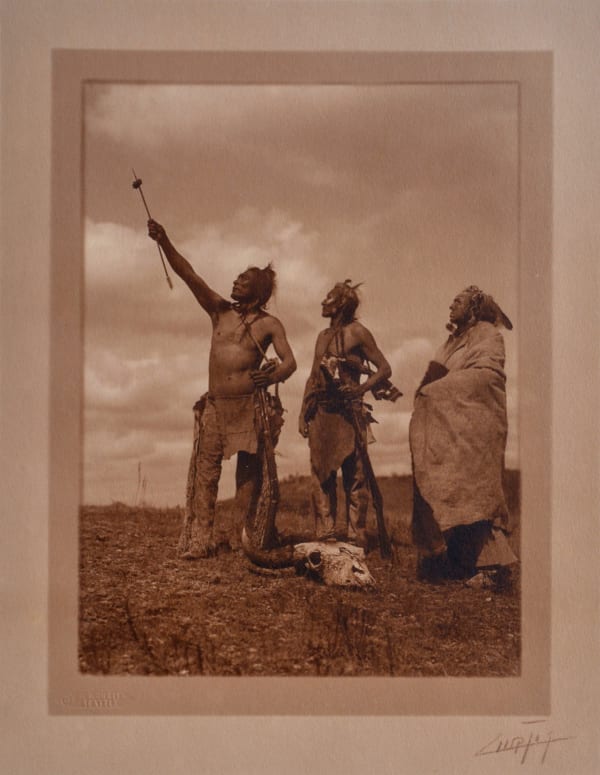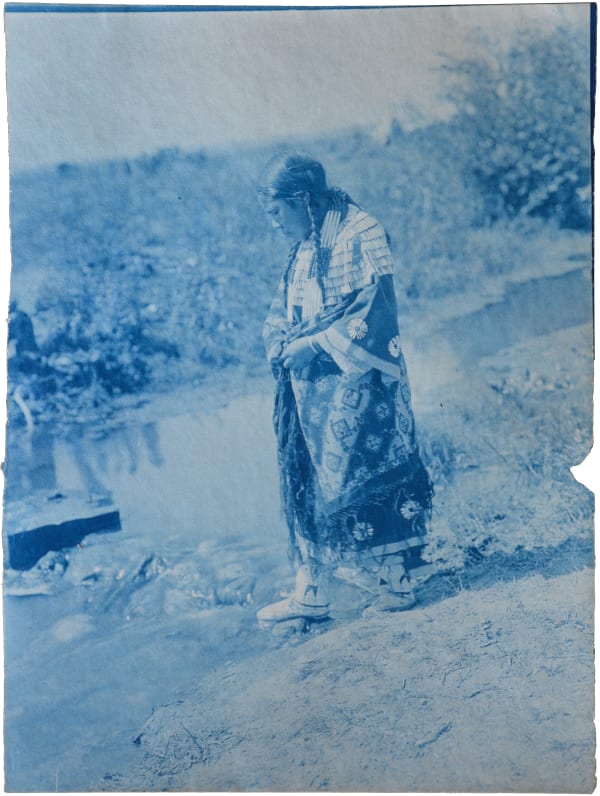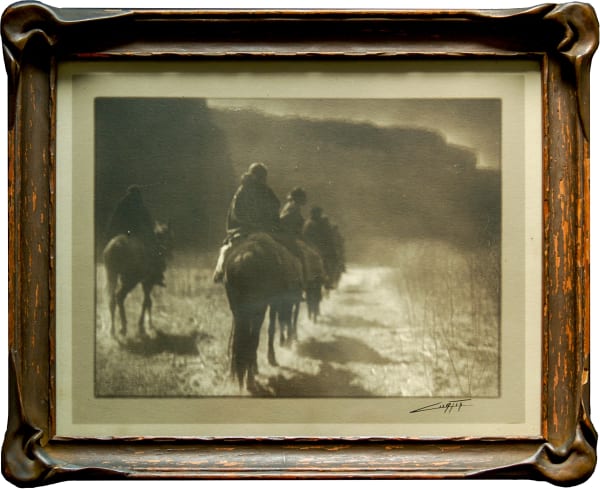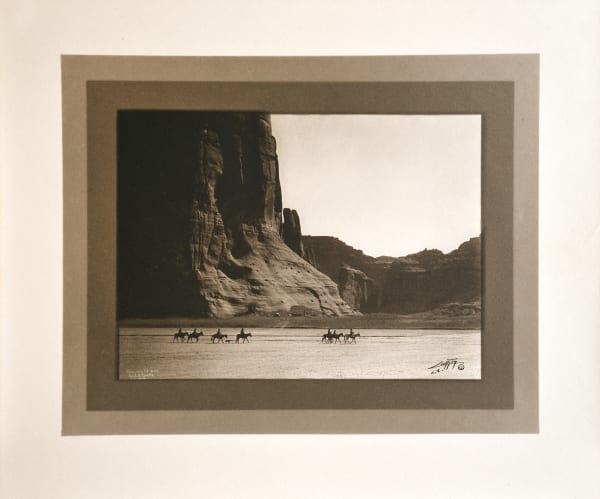Edward S. Curtis was a master photoengraver, photographer and printer of stunning technical virtuosity. From 1900 to 1914, his mastery of the grandest pictorial style and technique in his photogravures and silver and platinum prints was rivaled only by the most elegant prints of Edward Steichen and Alfred Stieglitz. By 1907 Edward S. Curtis was the most famous and popular photographer in the country much as Ansel Adams became later in the 20th century.
Curtis employed an unusually wide variety of photographic processes. His vintage body of photographic work includes Albumen Prints (gold-toned printing out paper prints); Platinum Prints, Gelatin Silver Prints; Blue Toned Silver Prints; Collodian Silver Prints, Cyanotypes; Glass Lantern Slides; Goldtones (known also Curt-tones and Orotones); Glass Negatives; original Photogravure Prints; and the original Copper Photogravure Printing Plates for The North American Indian. It should be noted, that while Curtis produced photographic work in all the above processes, more than 98 percent of his vintage prints were Photogravures.
Curtis did print a very small body of his earliest and finest negatives in albumen, platinum, and silver mediums specifically for personal exhibitions and sale elite patrons. Most notable is his body of work done in platinum prints, now known as his Master Exhibition Prints, solely produced for his 1905 - 1906 East Coast Exhibition Tour and for patron J.P. Morgan.
In these Master Prints, Curtis's technical virtuosity is seen hallmarked by tremendous subtlety, delicacy, and richness. They are his greatest images executed in the most dramatic, challenging processes of photographic expression.
-
 Hopi Weaver, 1900
Hopi Weaver, 1900 -
 Offering to the Sun - San Ildefonso, 1925
Offering to the Sun - San Ildefonso, 1925 -
 Offering to the Waterfall - Nambe, 1925
Offering to the Waterfall - Nambe, 1925 -
 End Of Day, 1904
End Of Day, 1904 -
 The Oath - Apsaroke, 1908
The Oath - Apsaroke, 1908 -
 Flathead Camp on the Jocko River, 1911
Flathead Camp on the Jocko River, 1911 -
 Prayer To The Sun by Hopi Snake Priest, 1907
Prayer To The Sun by Hopi Snake Priest, 1907 -
 An Oasis In The Badlands, 1905
An Oasis In The Badlands, 1905 -
 The Three Chiefs - Piegan , 1905-1906
The Three Chiefs - Piegan , 1905-1906 -
 Red Horn and His Son - Piegan, 1910
Red Horn and His Son - Piegan, 1910 -
 Cheyenne - F6, 1911
Cheyenne - F6, 1911 -
 Arapaho – B63x, 1910
Arapaho – B63x, 1910 -
 Cheyenne - F2 , 1911
Cheyenne - F2 , 1911 -
 Hamtsitsuwisu Dancer- Kwakiutl, 1914
Hamtsitsuwisu Dancer- Kwakiutl, 1914 -
 Joseph-Nez Perce, 1903
Joseph-Nez Perce, 1903 -
 Nez Perce Babe Albumen Print , 1899
Nez Perce Babe Albumen Print , 1899 -
 The Lookout - Crow - Montana, 1905
The Lookout - Crow - Montana, 1905 -
 The Vanishing Race, 1904
The Vanishing Race, 1904 -
 Bringing In The Willows - Blackfoot - Montana , 1900
Bringing In The Willows - Blackfoot - Montana , 1900 -
 Under The Cottonwoods - Canyon De Chelly , 1904
Under The Cottonwoods - Canyon De Chelly , 1904 -
 The Vanishing Race, 1904
The Vanishing Race, 1904 -
 An Oasis In The Badlands, 1905
An Oasis In The Badlands, 1905 -
 Canyon de Chelly, 1904
Canyon de Chelly, 1904






















